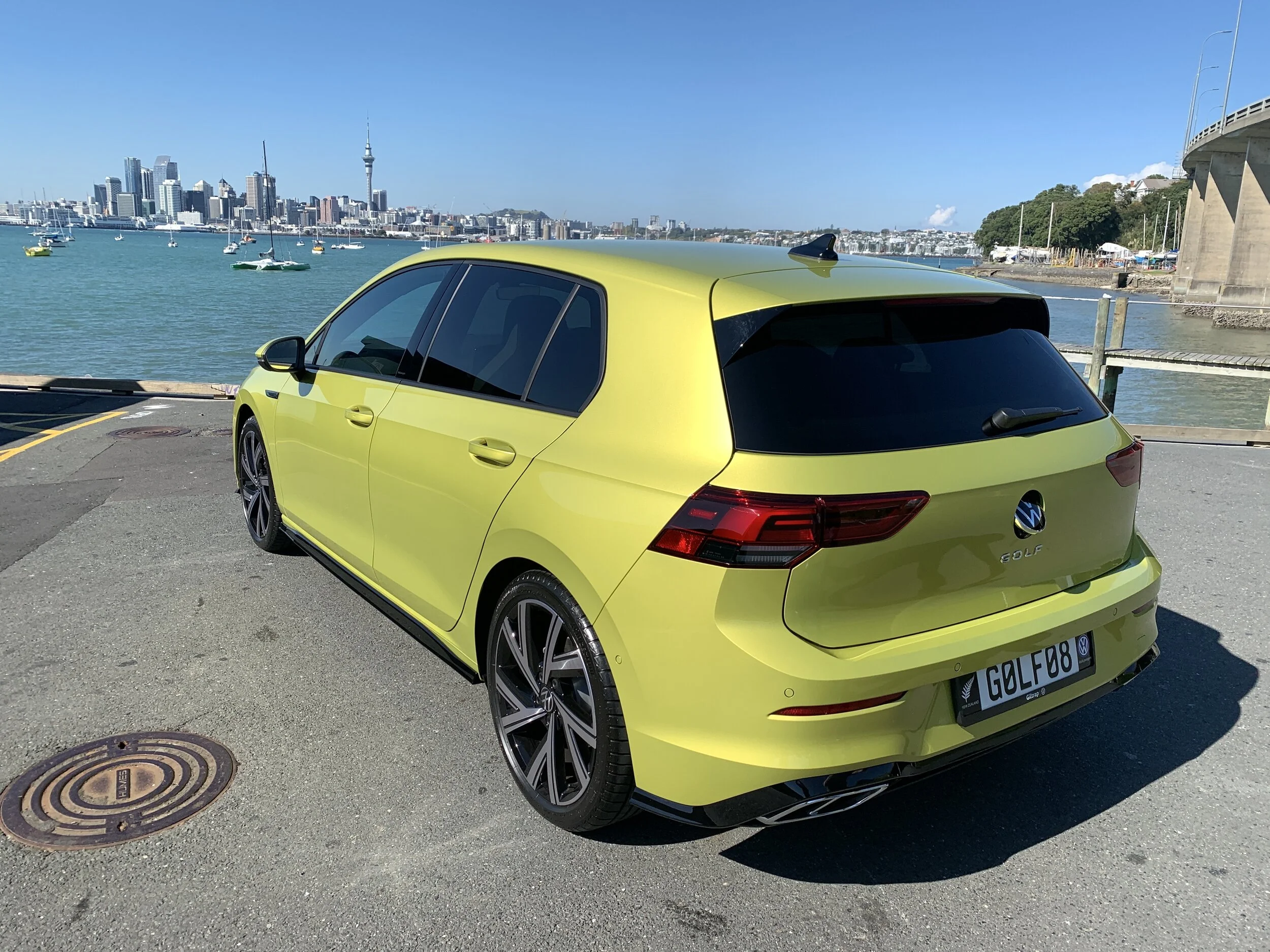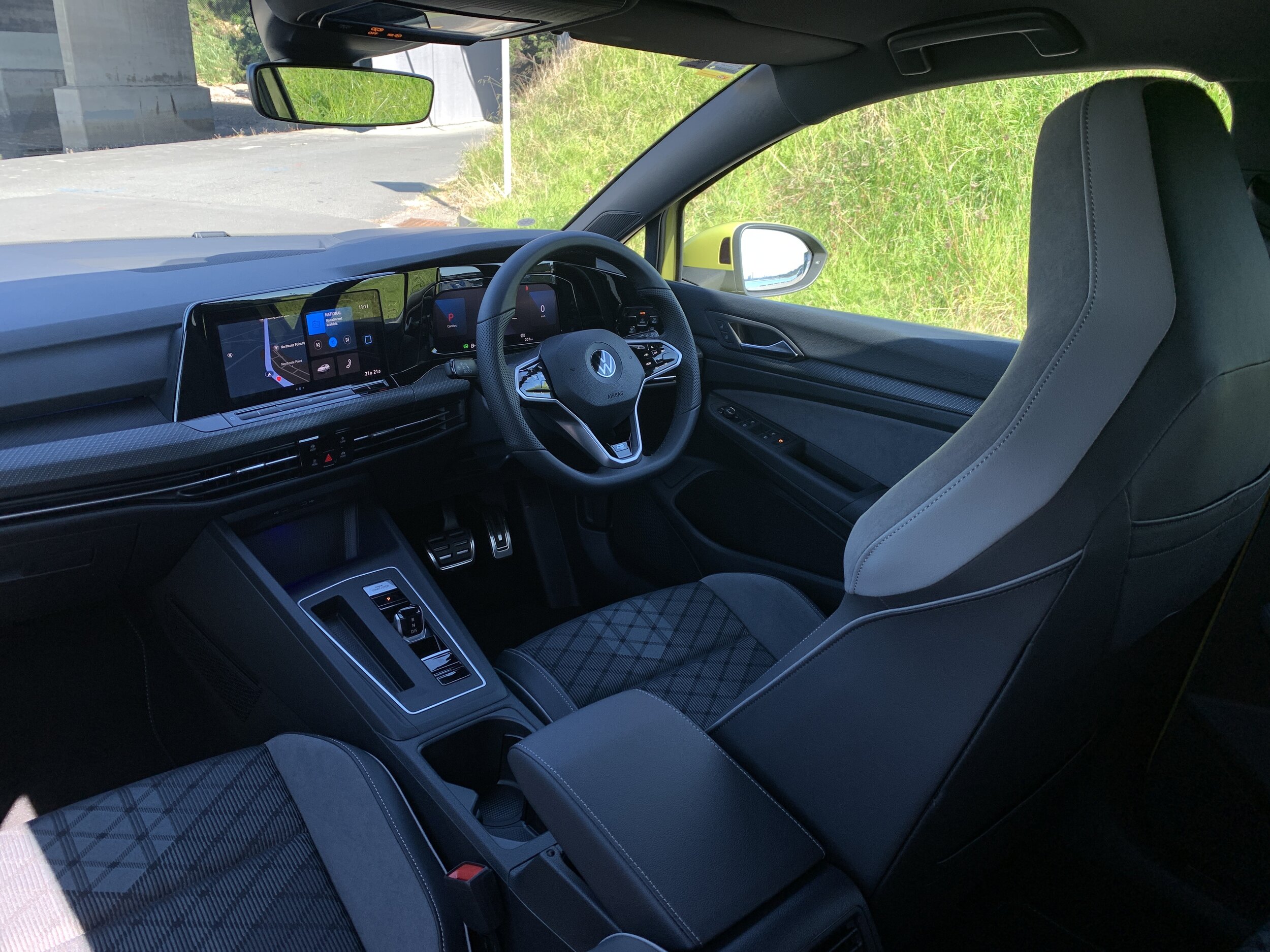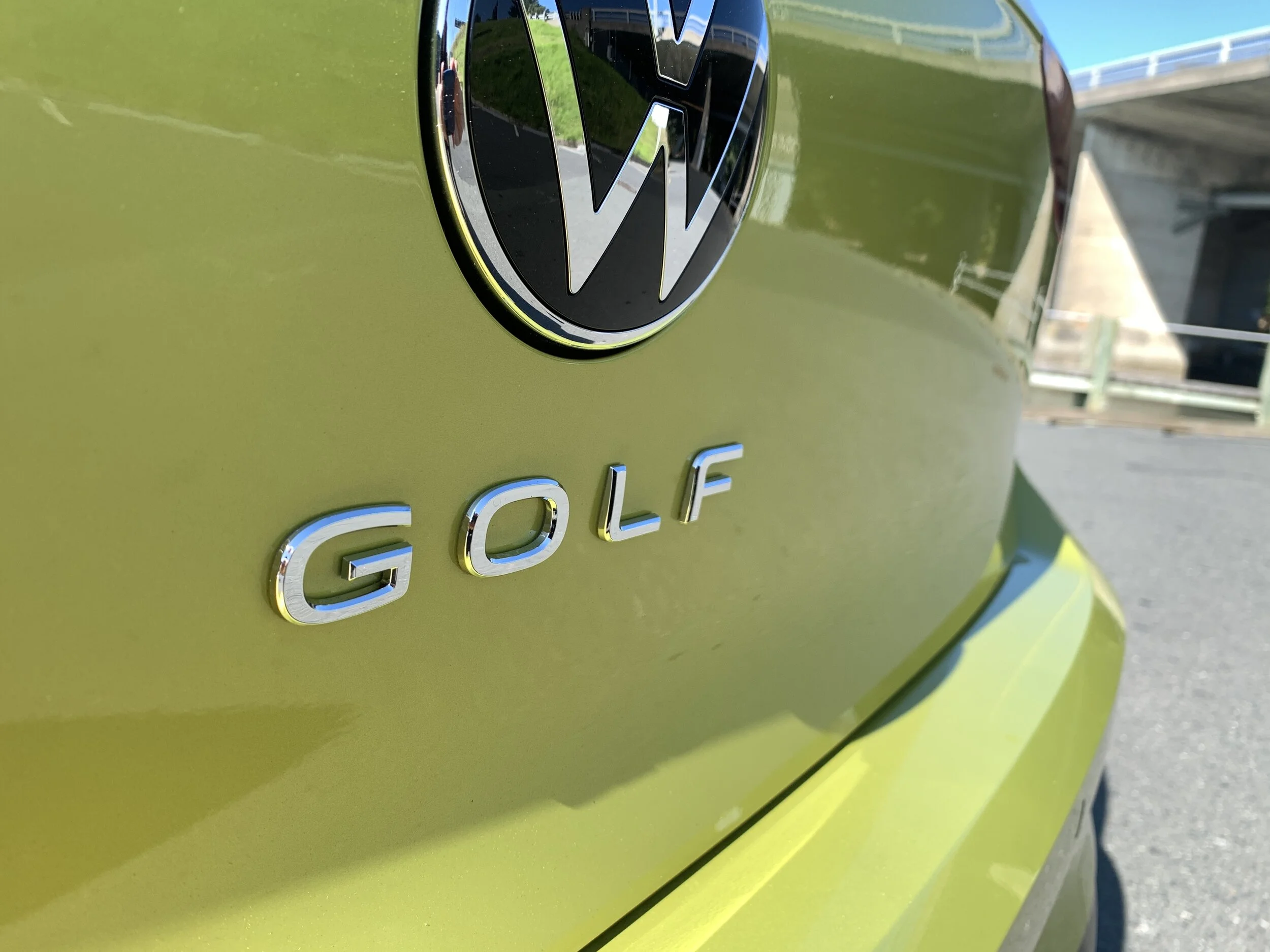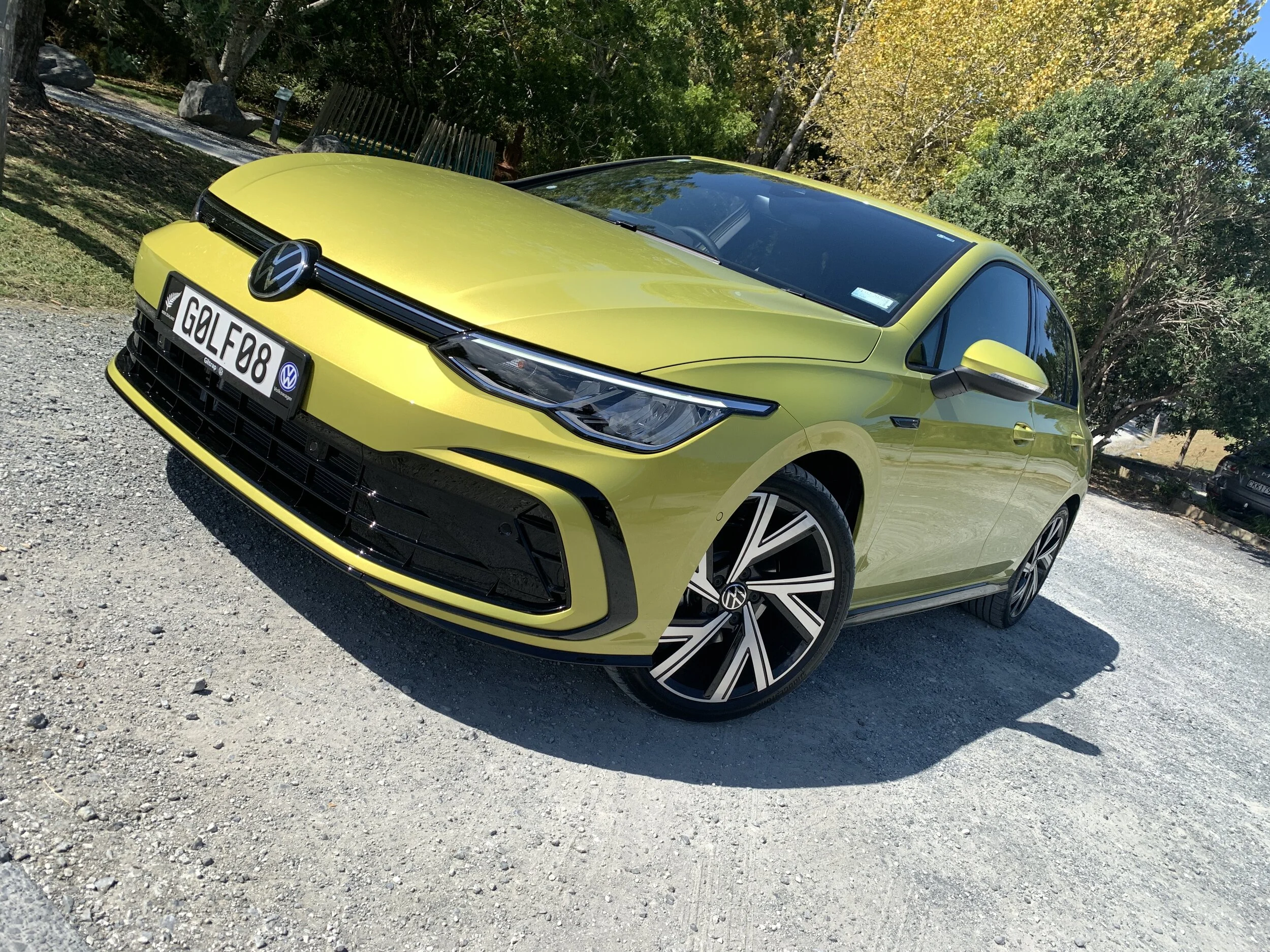VW Golf: Tech to a tee for a sweet score
/The latest generation of this benchmark hatch uses a host of smart driver assists to keep it ahead of the game.
WITH Volkswagen putting so many eggs into the electric basket, where does that leave the brand’s most celebrated modern-era model?
Sitting pretty, actually. Timing neatly with the national launch of the Mark 8 Golf hatch, initially in mainstream petrol 110kW/250Nm 1.4-litre turbocharged $37,990 Life and $47,990 R-Line formats with yet-to-be-priced 2.0-litre turbo 180kW/370Nm GTI and 235kW/420Nm Golf R hotshots arriving in May and November respectively, some good news.
World out of Wolfsburg, Germany, is that there will definitely be a Mark Nine line. And it will definitely continue with combustion engines.
After that? Well, who knows. But at least Golf’s immense fan base has assurance that Golf will play on for years beyond the period when it is joined – from 2023 in New Zealand’s case - by a growing family of pure electric ID models.
Yes, it will change as the world keeps weaning off fossil fuels. Not to a point where there will be another e-Golf, as we had until recently. A replicant is no longer required because that’s a job given to the ID line. However, plug-in replenished hybrid editions seem a certainty.
Intention to retain combustion cars such as Golf for ages will jar in some quarters. After all, all maker accept electric is the future, VW Group has already committed more funding and resource to a mains-drawn driving programme than any other legacy car marker and this is a time when other,
Volvo and Jaguar being headline examples, have pledged to make their entire ranges battery-reliant by 2030.
However, VW boss Ralf Brandstatter says his operation believes that’s not the best course, saying the other day: “We will still need combustion engine … but they should be as efficient as possible.”
Golf won’t be alone in this survival club. Tiguan – which has also just arrived here in mid-life refreshed form - T-Roc and Passat are also involved. All, save the last, have been very strong sellers in New Zealand. The two crossovers moreso than Golf in recent years, which is hardly unexpected. The swing from orthodox passenger formats towards quasi off-road models is a global trend from which no mainstream brands have been immune.
Regardless, there’s never been any consideration to quitting Golf locally. So much history, right? You’re talking about a nameplate that has brought VW more than 35 million sales since it fronted in 1974 to replace the original Beetle (which, with 21.5m moved, holds the world record as the longest-running and most-manufactured car off a single platform).
VW NZ boss Greg Leet reckons that, after an unusually quiet 2020, when just 380 Golfs found homes (damn you Covid), 2021 will be a revival year for this five-door hatch, with 750 sales targeted. Sure, they’ll also push through at least 1000 Tiguan five-seaters in the same period, but still …
So here we are, at last getting to drive a hatch that should have been here late last year but … again, damn you Covid.
The additional wait should not erode anticipation. There’s more to this car than what you see from a casual once-over. I’m not saying it’s a boring looking offer. Assuredly, in the Lime Gold metallic hero hue (the only colour that costs extra, adding $500 to the bottom line), the R-Line I drove is far from being quiet looker. Yet in profile particularly there’s enough familiarity to remind that Golf’s design remit is like that for another icon, the Porsche 911: You want to make it different, yet also the same. Not just in generic shape. The overall dimensions are also the same as before and, yes, it’s based on similar underpinnings to the model it replaces.
Still, snoop around the front and rear you’ll see fresh creativity adhering to an understated overall appearance. The headlights are shapelier than before, and the radiator grille slimmed down almost to the point of not being there at all. At the rear, the brake lights are a little more chamfered than before, and both they and the headlights are now standard-fit LED units. Also, there’s a GOLF in big lettering across the back, right underneath the circular VW logo that also operates as a boot opener and holds the reversing camera (so auto-tilts up when you’re backing). That designation is just for this level. Go to the sports models and you get either ‘GTI’ or simply an ‘R’.
All the same, to discover how much further advanced the car is over its predecessor you need slip inside. Here’s where you truly find the new world, substantial technology uptakes having demanded a complete refresh of the architecture.
Most noticeable alterations are, first, the lack of a traditional gearstick to activate the eight-speed auto. It’s replaced by a toggle-switch, which looks cool though the intent is to free up extra storage space on the centre console. But does it? Because the surrounding buttons for engine stop-start, parking brake, auto-hold and the P(ark) function of the gearbox are so large … well, no, not really. Hardly worth the effort, even if it does look good.
While the previous Golf had already sprouted big screens and gained digital dials, this one goes further still, with a swanky fully digitised display that does away with most analogue switches and dials.
The New Zealand spec delivers a 10-inch TFT screen in front of the driver, with a head-up display projecting onto the windscreen reserved for R-Line trim, into which a central infotainment screen - 8.25 inches on the Life, a more impressive 10 inches for R-Line – blends in, rather in the manner of the Touareg SUV’s.
Most functions are controlled via a central touch-screen, there are additional touch-sensitive switches for some functions, and at R-Line level there's also a voice assistant feature that controls everything from navigation settings to climate control.
It's all very swish and high-tech, but you’d be forgiven for initially wondering if VW's quest to seemingly eliminate every bit old-school functionality from the cabin has made operating some basics more awkward than needbe.
The ‘logic’ driving the process to resetting the ventilation system’s fan speed wasn’t immediately obvious by any means. Altering the ride settings was also tricky until I twigged that this, too, is best accessed by a shortcut prompt that’s not instantly identifiable. It’ll all come to you, but perhaps a dry run with the car idling in your driveway is a good idea.
While the NZ-market cars are not as smart as those in Europe, where a provision of constant internet connection allows it to become the first VW to be enabled with Car2X technology - which allows it to talk to other Car2X-equipped vehicles and roadside equipment, which in the future could theoretically help reduce the likelihood of an accident – they’re hardly ‘lite.’
As standard, Golf has a host of active safety systems that warn you if you’re about to collide with an object or person in front of you, and then activate the brakes autonomously to prevent a crash if you don't react in time.
The Life has front assist with pedestrian and cycle monitoring, side assist with rear cross traffic alert and lane assist, and while the R-Line adds in voice control, travel assist – when running the active cruise control, you can activate via a steering wheel button automated driver assistance systems that can control the car on the motorway at speeds of up to 210kmh - and also tops up the comfort side by some margin, the entry car is hardly impoverished.
Both variants have keyless opening and start, rain-sensing wipers, a wireless phone charging pad and LED lights, for instance. The R-Line ratchets up the comfort with sports seats and more upmarket trim, delivers on sports suspension, swaps from 17 inch alloys to 18s, upgrades from tethered Apple CarPlay/Android Auto to wireless, improves to climatronic air con, a more upmarket stereo, delivers native sat nav, has privacy glass and acts on spoken instruction. But both models have a swish ambient lighting feature to make the interior seem just that little bit more special; the difference is that with R-Line you get 30 colour combo choices, against a ‘mere’ 10 in the Life.
The non-digital aspects of the cabin are good too. everything else looks and feels impressively well-made, and the seats are fantastic. Rear seat space is basically identical to that of the Mk7 Golf, which means two lanky occupants can travel comfortably back there, and while a 380-litre boot capacity is not class-leading, the space’s sensible shaping makes it decent enough.
The build quality and perceived material quality is, however, of a very decent standard for the class – if anything, it’s another VW that probably makes Audi feel really nervous. Unobtrusive levels of wind noise and tyre roar made cruising on Auckland’s northern motorways a pleasure, though potentially also had one drawback, in potentially accentuating the presence of trim chatter triggered when the car crossed a section of rough coarse chip around Matakana.
This market taking, in these models, just a single engine choice is subject to change. Golf’s full international powertrain provision is reasonably modest, yet plug-in hybrid is on the roadmap – with outputs of 152kW and 182kW cited - and already Europe and the UK take an efficiency-tuned eTSI-branded ‘mild’ hybrid with advanced stop-start functionality married up to a 48-volt mild-hybrid system, based on a 1.5-litre petrol, in three states of tune.
That unit is being considered for this part of the world, but depends on Australia’s view. VW wants to bundle our countries so achieving the green light will depend on the outcome of trials being conducted across the Tasman. The challenge is that their fuel quality isn’t as good as ours.
Interested? If the choice settles on the most powerful of the types, the outputs are basically lineball with those from what we get now, and the performance figures too: 8.5 seconds for 0-100kmh, 224kmh top speed.
It’d all come down to the Green scores for economy and emissions. The 1.4 is already pretty decent on the first, with a cited 5.8 litres/100km score on the WLTP test, but the hybrid seems set to be a lean burn queen. It has active cylinder cut-off and will also shut and allow you to coast for a few seconds at a time on the open road. Lower-powered forms run on the fuel-saving Miller Cycle (named for Harry Miller, famed builder of Indycar racers and engines in the 1920s).
VW's chosen test route was no stress for the engine we have now, and the chassis hardly had a workout either, so full determination about that side of things awaits a full test.
From what could be learned, it’s a powerplant that will surely meet the expectations of the client base a Golf in mainstream format will attract; quiet, refined, reasonable pull when asked to perform.
In short, another fine example of why the fashion for downsizing engine capacities carries no threat in a modern age. If anything, today’s 1.4-litre feels stronger, more flexible and more satisfying than the 1.6s and 2.0-litres that, in the past, also seemed just right. So, yeah, it does a good job. Marriage to the eight-speed auto also seems amenable, but you’ll wonder why a brand that has done so well establishing direct-shift gearboxes has gone to a full auto here. As much as the eight-speed auto’s smoothness is appreciated, it lacks the involvement of a DSG, which still configures in the performance variants, and isn’t as immediate in its responses.
Still, no-one should think that by stepping into an R-Line that they’re buying into a more budget GTI alternate. The performance isn’t that brisk and, though it turns in neatly and briskly, grips strongly and, thanks to the multi-link rear, keeps its rear wheels on the ground even when you hit some truly nasty mid-corner bumps, this variant is not designed to deliver an ultimate handling edge. The adaptive chassis control feature that allows drivers to tailor the firmness of the car’s suspension, the sharpness of the steering and the responsiveness of the engine to their particular preference is a handy feature, but even in our short stint it was apparent that the setting providing best balance on our drive was Comfort.
This first meeting enforced impression that, the obvious technology uplift aside, VW wasn't going to take any major chances with this generation of its core car. There’s no disappointment in this. Here’s a brand that has honed making its family five-door to a fine art.
The car’s long-standing recognised status as true benchmark, not just for Volkswagen but for the wider industry, is best expressed at this level by it’s astounding tech investment; this is truly a car well sorted for a fast-changing future.
So much so that, when VW here found the usual exercise of matching it against class competitors a real task; the problem, simply, is that just a handful come close to being truly relevant.
Mazda3 came in for tech and comfort, the Ford Focus for driver assists and driving flair and the Toyota Corolla made the grade because … well, volume king, right? But even those cars don’t rate as perfect alternates. Realistically, those that do are from more premium brands; potentially Volvo, perhaps Mercedes Benz, probably BMW and, ahem, also Audi.
VW sees itself more as an aspirational than an outright prestige marque, and that reflects in this car’s pricing. All the same, though, the Golf in this form might very well make you question the need to upgrade to an Audi. In a category and price band where buyers often put up with less, it’s a particularly alluring non-premium priced ‘premium’ choice.























